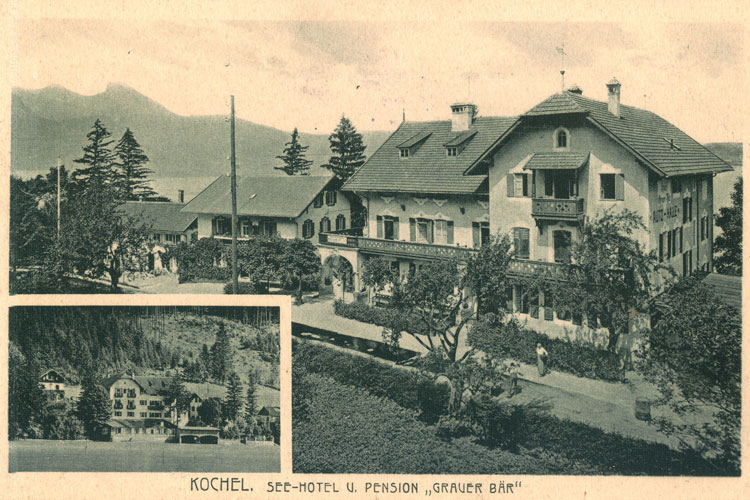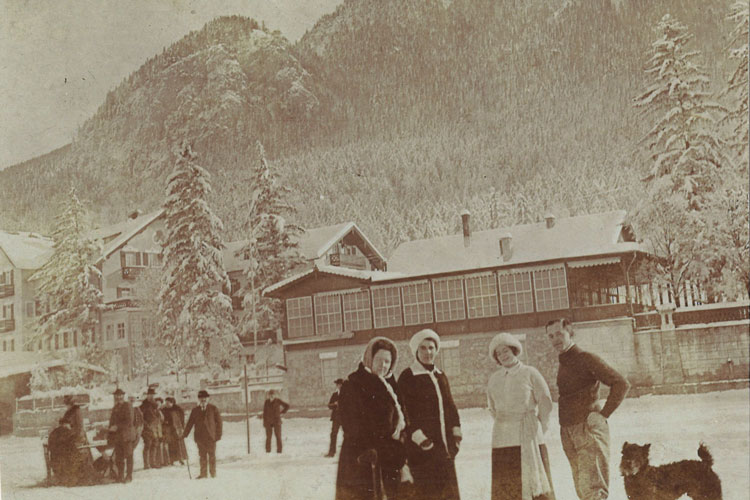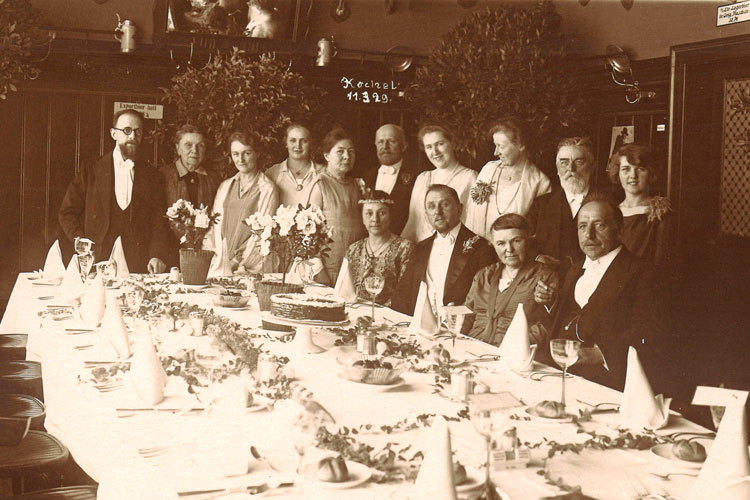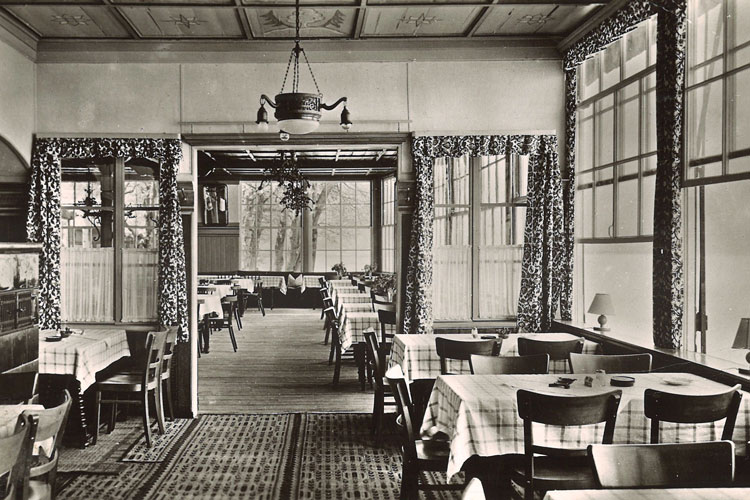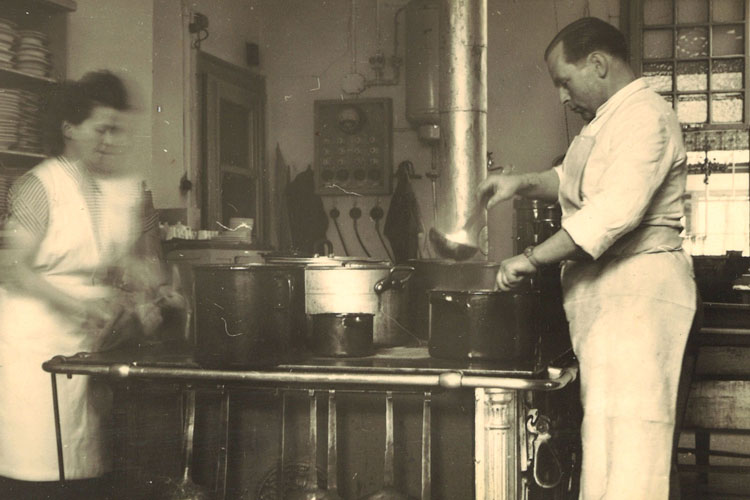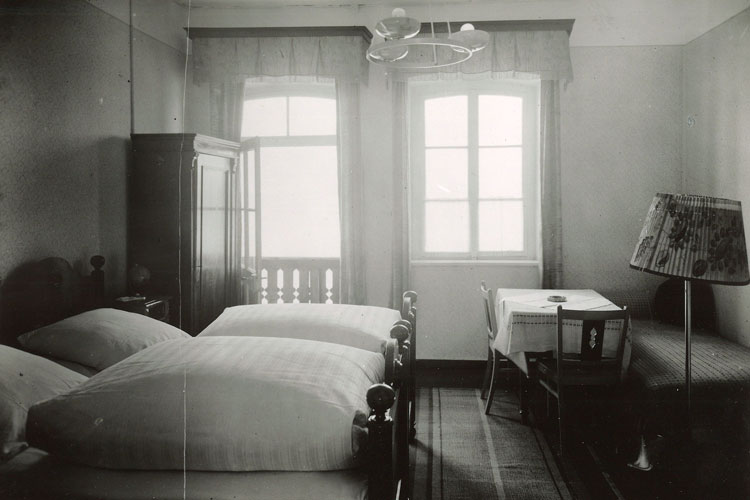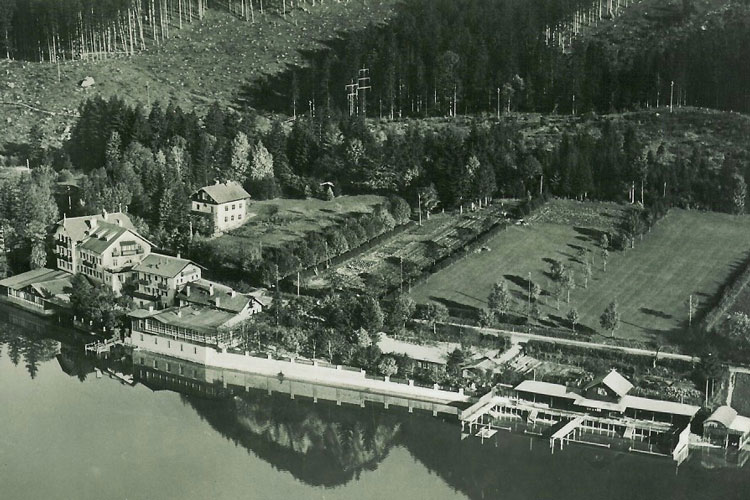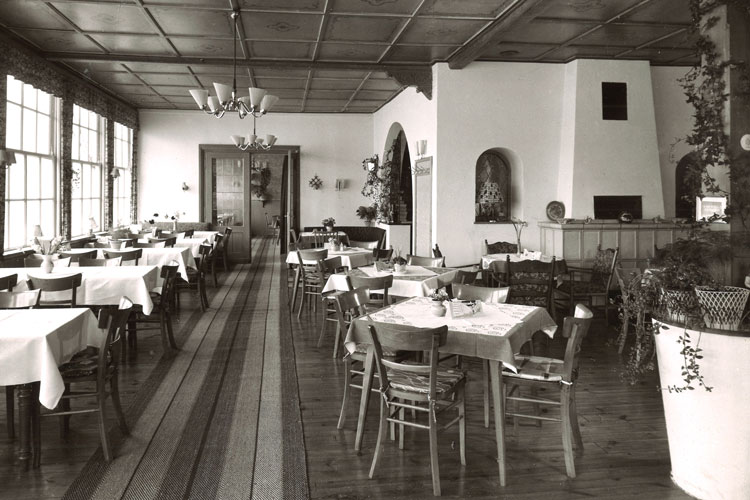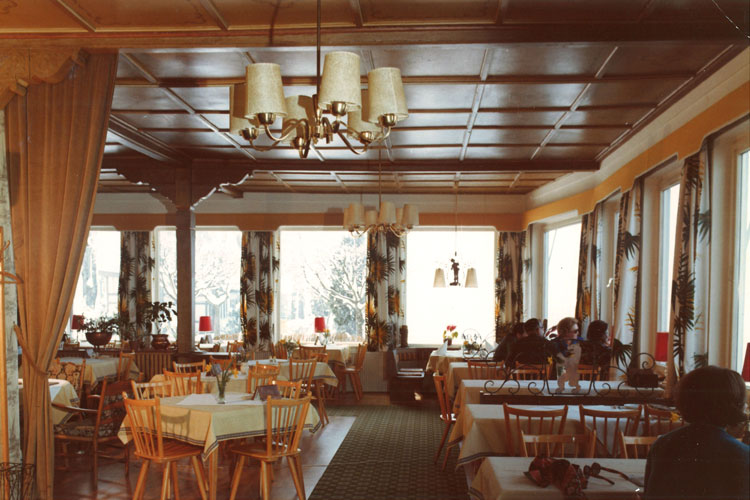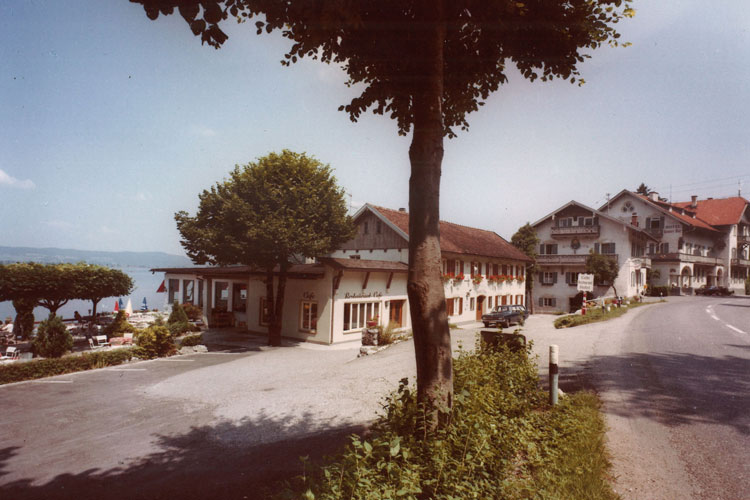The “Grauer Bär” story

Where the federal highway 11 leads through Kochel down the mountain towards Kesselberg, the Seehotel “Grauer Bär” is located in front of the mighty backdrop of the Herzogstand directly on the banks of Lake Kochel. The Sebald family, which are can look back on a long, eventful history. As early as 1805, exactly 100 years after the Sendlingen Farmers’ Battle (Bauernschlacht), in which the downtrodden farmers of the Bavarian Oberland rose up against the Austrian occupying forces, Johann Braunhofer built the first building (in which the restaurant is now located) on community property. The house name “Kreidenhansl” suggests that at that time, unlike today, the landlord’s payment habits were poor and he was in the “chalk” of several creditors. The pub developed into a respectable inn in 1863 under the new owners, the Fink family. During this time, the village Kochel had become a “Bad Kochel” and many celebrities relaxed on the banks of the Kochelsee. In addition, the new Kesselbergstrasse was opened in 1897 by his highness, Prince Regent Luitpold of Bavaria. This attracted many visitors to Kochel who in turn needed accommodation. The opening of the Munich – Kochel railway line also took place at this time and thus began the heyday of tourism in the Kochelsee region.
That’s why the Munich architect Oscar Strelin acquired the property and built the large hotel building with a public bath (with separate areas for men and women) in 1899. The actual reason for this construction project was to block the wonderful view of Lake Kochel with his new building from his unpopular opponent, Prof. Rancher, who owned a weekend house on the opposite side of the street. Famous painters such as Wassily Kandinsky, a founder of the “Blauer Reiter” artist group, visited the “Blue Land” on Kochelsee and spent the night in the “Gray Bear”. There is still a painting hanging in the Moscow Tetyakov Gallery today, depicting the lake, the Jochberg and the “Gray Bear”.
In 1905 a new era began for the Seehotel. The Pasinger hotelier Johann Sebald bought the entire complex and moved to Kochelsee with his wife Katharina and his three children Hans, Georg and Wally.
The first international automobile race (Kesselbergrennen) immediately brought important guests to the “Gray Bear’s” house and magnificent machines to its garages. The “Gray Bear” hosted Bernd Rosemeyer, Hans Stuck, Rudolf Carraciola and many other greats. Even back then, Johann Sebald had big plans that are still there today. Among other things, the demolition of the existing restaurant and the complete new building with tennis courts and bowling alley. Unfortunately, this was never approved because of World War I.
In 1910 his wife Katharina Sebald died, as did both sons Hans and Georg during the First World War. In 1915 Johann Sebald married Elise Bindel and in 1919 their son Hans and in 1923 their daughter Elisabeth were born. 1919 – 1924 during the construction of the Walchensee power plant, the entire construction management lived in the Seehotel and at the opening Paul von Hindenburg, who later became Reichpresident, also stayed in the “Grauen Bären”. Johann Sebald died in 1934. His wife took over the management of the hotel with a strong hand and iron will. In the years before the Second World War there were many KdF companies in the house.
Then World War II began, which was to leave deep traces in the history of the house. By decision of the Reichsführer of the SS, the “Gray Bear” was confiscated to set up a transit camp for Besserabien Germans. In previous years the house had already provided accommodation for the Volksdeutsche children’s country deportation. This was probably the result of the inspection carried out by the district manager and the mayor at the time, who, according to records, certified that the house was in “atrocious structural condition”. Regardless, it continued to be used as a transit camp. Worse still, despite the owners’ protests and legal action, the hotel was almost completely expropriated and the family was banned from any economic activity.
Written records state that on November 18, 1943, a Dr. Count from Berlin confiscated the hotel as a residence for the gentlemen from the “Hydraulic Engineering Experimental Institute” who were supposed to arrive from Berlin in December 1943. Dr. Graf acted on behalf of Reich Minister Speer, whose plans were “decisive for the war and of the highest level of urgency”.
However, the “gentlemen from Berlin” had changed their minds because no one arrived, and so the transit camp existed until the end of the war. When war was finally over in 1945 and the American troops occupied Kochel in May, the “Rest Center of the 9th” was established in Grauer Bären. Infanty Division” under the 1st. Lt. Cavallary decorated. It is documented in writing that the Americans borrowed countless beer mugs and all the garden seating. However, this equipment never found its way back to its owner. A curious incident from this time is still told today: Elise Sebald, who run the business in this time, had the foresight to bury the valuable silver and essential foodstuffs in canned goods near the house, before all the hardships of the war. Among the American soldiers there were passionate anglers who took advantage of the opportunity and wanted to fish for big fish in the Kochelsee. They hoped to find the necessary bait while digging around the house. Mrs. Sebald, terrified for their treasures hidden underground, advised them to try their luck in the forest above, because there were particularly “fat worms” there. It is not known whether the soldiers found what they were looking for there. The supplies, however, were saved. From October 1945, refugees and displaced persons from the East found a home in the “Gray Bear”. The suffering of these people was indescribable and touched everyone, and they helped as best they could.
Even before the war, the young Hans Sebald spent his apprenticeship as a cook and pastry chef with Alfred Walterspiel, the owner of the renowned Hotel Vier Jahreszeiten (Four Sesons) in Munich. After being taken prisoner of war, he married Rosa Konigsbauer in 1947. Times improved, accommodation was gradually built for the homeless and the hotel was slowly returned to its intended use. In 1949, the then very provisional hotel operation was started again and in 1960, when all refugees outside the hotel had a roof over their heads again, the work could be continued without restrictions. Elise Sebald died in 1959.
Hans and Elisabeth Sebald then took over the management of the hotel. The house was continually renovated and expanded. In 1994, additional spacious holiday apartments with a terrace or balcony were added in the central building between the adjoining building and the hotel. During these years, a part of the restaurant which dates back to the 1960s, was completely renovated in the restaurant, after which the reception and the restaurant were considered. After Hans Sebald’s death in 1982, Elisabeth Sebald headed the house. Her services to the Gray Bear are particularly noteworthy. She was the soul of the house, an old-fashioned landlady and always had an open ear for everyone. The hotel was her life’s work. She died in 1997. Life went on.
Now Hans and Peter, the sons of Hans and Rosa Sebald, took over the management. With the newly built winter garden directly on the lake in 2003 and the wellness area, the Sebald family was able to fulfill a long-cherished dream and delight their guests with another amenity. You can now relax in winter in cozy, warm rooms and take in the view of the Alpine panorama and the wintry Kochelsee and enjoy the stimulating atmosphere of the sauna, steam bath or whirlpool. The Seehotel “Grauer Bär” is a “sweet treat” among the hotels in the region and a guarantee for pleasant and beautiful days of relaxation. But there are already new plans in the drawer waiting to be realized.


